BLACKOUT
World War II and the Origins of Film Noir
Sheri Chinen Biesen
Johns Hopkins University Press
"The camera slowly zooms in on a silhouette of a man on crutches until blackness fills the screen..." —
Blackout
"This volume stands out as one of the best and perhaps the single most essential book in English on film noir. Biesen reveals an untold part of the movement with originality, sophistication, and vitality. Her work will become a foundation for subsequent interpretation of film noir, as well as an ideal text in film, history, and cultural studies courses."—
Brian Taves, film historian, film archivist, Library of Congress and author of The Romance of Adventure: The Genre of Historical Adventure Movies
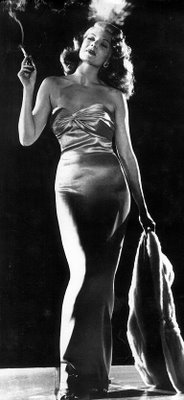
"
Biesen's Blackout is
quite a find, a
must-read book on
film noir."
“Biesen’s book is readable, informative and jargon free… Biesen uses her research into studio archives, the films’ attendant publicity and the contemporary press to bring alive the wartime period of film noir and its transformation into a post-war genre for dealing with troubled veterans returning home, the coming of the Cold War, nuclear angst and the effects of McCarthyism on Hollywood and the nation at large.”—Times Literary Supplement
"
Biesen provides the most detailed and thoroughly researched interpretation of this era's American film noir." —
Clayton Koppes, American Historical Review
Challenging conventional scholarship, placing the origins of film noir in postwar Hollywood, Sheri Chinen Biesen finds the genre's roots firmly planted in the political, social, and material conditions of Hollywood during the war. After Pearl Harbor, America and Hollywood experienced a sharp cultural transformation that made horror, shock, and violence not only palatable but preferable. Hard times necessitated cheaper sets, fewer lights, and fresh talent; censors as well as the movie-going public showed a new tolerance for sex and violence; and female producers experienced newfound prominence in the industry.
Biesen brings prodigious archival research, accessible prose, and imaginative insights to both well-known films noir of the wartime period—
The Maltese Falcon, The Big Sleep, and
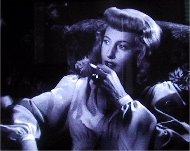 Double Indemnity
Double Indemnity—and others often overlooked or underrated—
Ministry of Fear, Phantom Lady, Scarlet Street, Moontide, Street of Chance, Detour, Murder My Sweet, This Gun For Hire and
Stranger on the Third Floor.
Historical study of the influence of World War II on film noir, censorship, propaganda and Hollywood motion picture industry grounded in behind-the-scenes studio filmmaking archival research.
Media Requests and Exam Copies Available. For more information or to receive a copy
https://jhupbooks.press.jhu.edu/content/blackout


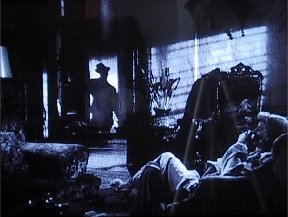
“
Sheri Chinen Biesen wades into the murky, controversial world of film noir with a thoughtful monograph on the development of Hollywood's film noir in the 1940s. A film noir aficionado, Biesen provides the most detailed and thoroughly researched interpretation of this era's American film noir. The heart of her study is intensive analysis of the production histories of several key noir pictures. She highlights the pivotal role of Double Indemnity, directed by Billy Wilder for Paramount in 1943–1944, after being held on ice for nearly a decade by censorship concerns and studio timidity. Double Indemnity nicely illustrates Biesen's thesis that World War II, rather than retarding the development of American noir, was integral to it. As she writes: "The chiaroscuro lighting and shadowy visual design that today is considered so characteristic of film noir style was in large measure a savvy aesthetic response to the [Production] Code and the war" (p. 107). Biesen emphasizes that the motion picture industry's production code, though claiming to represent timeless aesthetic and moral criteria, was enforced more liberally in the 1940s and later. She also stresses the importance of the constraints the studios faced during World War II, when blackouts, shortages of material, and limited numbers of leading men demanded innovative responses.” —
Clayton Koppes, American Historical Review
"Outstanding. Highly Recommended. Excellent Book. A fascinating, engaging, innovative and original work. A fine account of film noir and 1940s Hollywood filmmaking, film censorship and propaganda, and wartime conditions in America's movie capital during World War II. Ample noir stories of Los Angeles, Raymond Chandler, Humphrey Bogart, James M. Cain, Billy Wilder, Fritz Lang, Alan Ladd, Peter Lorre, Howard Hawks with hardboiled crime, venetian blinds, swirling cigarette smoke and smoldering seductive femme fatales like black widow Barbara Stanwyck, Veronica Lake and Rita Hayworth. A rich provocative study.
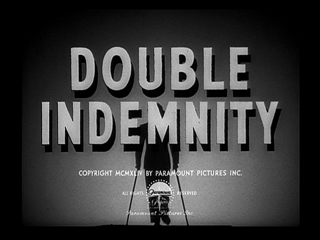
Terrific and enjoyable read for film buffs, cineastes, film critics, movie fans, industry insiders, cultural historians, researchers and cinema scholars, and an insightful and compelling look at the unexplored history of film noir and wartime Hollywood in the 1940s. Biesen's Blackout is quite a find, a must-read book on film noir. Wonderful revelations and essential reading for lovers of film noir. Revisionist, provocative, a bold paradigm shift—it changes the way you think about film noir."
"Biesen adds a new perspective that enhances scholarship on the subject and makes this book a must. Summing up: Essential."—
Choice

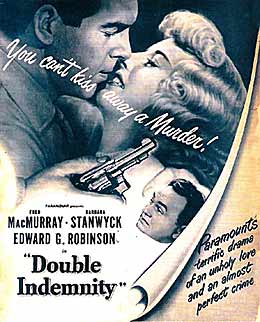

"Biesen uses her research into studio archives, the films’ attendant publicity and the contemporary press to bring alive the wartime period of film noir and its transformation into a post-war genre for dealing with troubled veterans returning home, the coming of the Cold War, nuclear angst and the effects of McCarthyism on Hollywood and the nation at large. She tells us of the public demand for “red meat” entertainment, and the desire of Hollywood to provide it, something amusingly expressed through
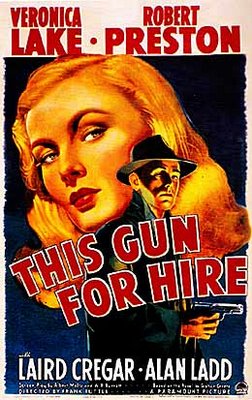
tag-lines thought up by the advertising departments—“Menace Behind Every Shadow, Suspense in Every Move” (Ministry of Fear), “The kind of Woman most men want—BUT SHOULDN’T HAVE!” (Mildred Pierce)...Biesen’s book is readable, informative and jargon free."—Philip French,
The London Times Literary Supplement
"French critics coined the term 'film noir' in 1946 after a series of brooding dramas from wartime Hollywood finally made their French debut. Yet, says
Sheri Chinen Biesen, noir is often seen as a predominantly postwar phenomenon. She argues that many critics and film historians have ignored the genre's links to World War II. Some have even echoed the screenwriter, director, and critic Paul Schrader, who wrote that the war temporarily pre-empted a flowering noir trend. It's just the opposite, says Ms. Biesen, a film historian at Rowan University.
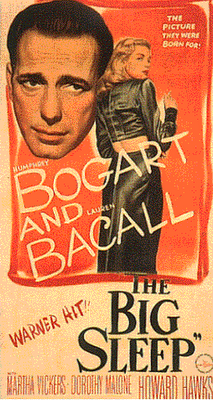
In
Blackout: World War II and the Origins of Film Noir (Johns Hopkins University Press), she shows how the film industry and journalists of the period were well aware of what some called a 'red meat' genre. The author links noir's violent, shadowy aesthetic to wartime constraints on Hollywood, including such practical concerns as the rationing of film stock and electricity; the desire to disguise recycled sets in

darkness, fog, rain, or smoke; the loss of thousands of personnel to military duty; and the problem of frequent blackouts and dimouts in Los Angeles. 'We lit our sets with cigarette butts,' Robert Mitchum once joked. Ms Biesen describes too how film noir drew on societal anxieties as Americans faced fear, loss and shortages during the
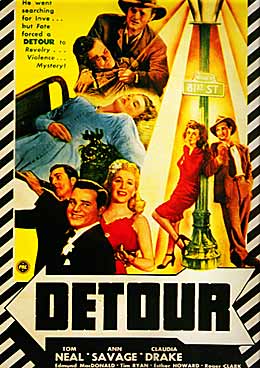
war and viewed ever-more-harrowing newsreel footage. 'As life on the homefront became increasingly hard-boiled,' she writes, 'so too did American film.'"—Nina Ayoub,
Chronicle of Higher Education
“Tantalizing Theory
Yes, Sheri Chinen Biesen has detonated a landmine in the field of film noir studies with her contention that, far from being a postwar movement, noir is totally tied up with actual conditions of the war being felt and fought during Hollywood studio production; so we might come to see the heyday of film noir as not the release of OUT OF THE PAST, nor any of the location-dominated "March of Time" inspired docudramas, but much earlier on, with the filming of THIS GUN FOR HIRE with Alan Ladd and Veronica Lake.
She invites us to attend to the way WWII scared the daylights out of Los Angeles and curtailed social activity through a literal blackout in which the previously iconic klieglights were darkened "for the duration," while West Coast citizens and government officials and conspiracy theorists worried about how soon the Japanese would attack southern California by bomber or submarine or from within.
Secondarily the arrival of so many talented artists from Nazi-dominated Europe gave film a darker cast, both in front of the camera and behind. She points to STRANGER ON THE THIRD FLOOR, THE MALTESE FALCON, PHANTOM LADY, and DOUBLE INDEMNITY as beneficaries of this process. With the top male stars in uniform, like Gable, Jimmy Stewart, Robert Taylor, the studios had to improvise and invent a new 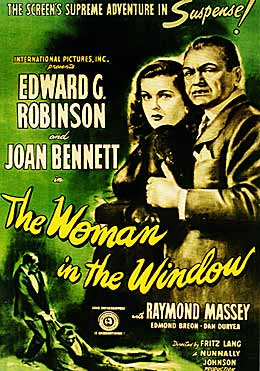 sort of cinema, one in which their female stars would henceforward be paired with freaks—old men, foreign men, little boys—the refuse of the draft. This was a time when an actor like Albert Dekker, Orson Welles, Peter Lorre, Laird Cregar, George Sanders, could dream of Hollywood stardom; when super short actors like Alan Ladd were suddenly magnified; when gay actors who'd been declared unfit for military service could become huge box office draws, their heterosexuality reinscribed by press flacks; and older men found their stardom artificially extended by a decade or more (William Powell, Ronald Colman, guys like that.) A few remaining tall, handsome, young and heterosexual men remained employable—John Wayne, Ronald Reagan, becoming stars no little thanks to the vacuum around them. And they were talented too, of course.
sort of cinema, one in which their female stars would henceforward be paired with freaks—old men, foreign men, little boys—the refuse of the draft. This was a time when an actor like Albert Dekker, Orson Welles, Peter Lorre, Laird Cregar, George Sanders, could dream of Hollywood stardom; when super short actors like Alan Ladd were suddenly magnified; when gay actors who'd been declared unfit for military service could become huge box office draws, their heterosexuality reinscribed by press flacks; and older men found their stardom artificially extended by a decade or more (William Powell, Ronald Colman, guys like that.) A few remaining tall, handsome, young and heterosexual men remained employable—John Wayne, Ronald Reagan, becoming stars no little thanks to the vacuum around them. And they were talented too, of course.
And women moved behind the camera too, as editors, producers, writers: Joan Harrison, Catherine Turney, Harriet Parsons, Virginia van Upp, Leigh Brackett. As BLACKOUT progresses towards the end of the war in 1945, we relive a strange moment in history in which Hollywood once again hardened itself for the invasion—the re-entry into their midst of all the returning vets, stars, writers, directors and miscellaneous personnel—who would put these trends on fast track and bring them outdoors.” — Kevin Killian
‘Thorough, detailed, insightful and scholarly
"Blackout" is subtitled "World War II and the Origins of Film Noir," and Sheri Chinen Biesen, an associate professor of radio, television and film studies at Rowan University, delivers the goods in this scholarly book. At the end of World War II, a large backlog of American films suddenly became available overseas. The French, seeing these films for the first time "all at once" instead of over a period of years, noticed a "dark" trend in them that had not been especially obvious to their American producers. French critics coined the term "film noir" to describe what they saw as virtually a new genre in filmmaking.
 Films noir typically (but not exclusively) featured hard-boiled private detectives, alluring but deadly "femmes fatale," stories told in flashbacks, complex plots, unconventional camera angles and stark black-and-white photography. Many of them involved crimes gone wrong, double- and triple-crosses, murder and mayhem, and the nastier side of human relationships. "Blackout" shows how these characteristics arose from the political, social, cultural and material conditions that existed in America during World War II. For example, films noir are "dark" because: a) lights were in short supply, b) power was rationed, and c) the West Coast (where most films during the War were made) was blacked out nightly because of the fear of Japanese submarine attacks. Many film noir stories took place at night, because the Government prohibited daytime photography that could accidentally include defense installations—thus eliminating most of the favored movie-making locations in Southern California. Relationships between men, serving overseas in combat, and women, who now did many of the previously male-dominated jobs on the Home Front, changed during the War, and films noir could not help but reflect these changes.
Films noir typically (but not exclusively) featured hard-boiled private detectives, alluring but deadly "femmes fatale," stories told in flashbacks, complex plots, unconventional camera angles and stark black-and-white photography. Many of them involved crimes gone wrong, double- and triple-crosses, murder and mayhem, and the nastier side of human relationships. "Blackout" shows how these characteristics arose from the political, social, cultural and material conditions that existed in America during World War II. For example, films noir are "dark" because: a) lights were in short supply, b) power was rationed, and c) the West Coast (where most films during the War were made) was blacked out nightly because of the fear of Japanese submarine attacks. Many film noir stories took place at night, because the Government prohibited daytime photography that could accidentally include defense installations—thus eliminating most of the favored movie-making locations in Southern California. Relationships between men, serving overseas in combat, and women, who now did many of the previously male-dominated jobs on the Home Front, changed during the War, and films noir could not help but reflect these changes. One of the most fascinating aspects of film production in World War II was the interaction of the movie studios with the Production Code Administration (PCA). "Blackout" describes in detail how the PCA enthusiastically carried out its "responsibility" of censoring screenplays that the studios presented to it in order to obtain the important "seal of approval." For example, the PCA banned "excessive drinking...references to sex, suggestive dancing, [and] any condoning of divorce..." from the screenplay for "Phantom Lady." This is just one very minor example. One wonders not only how films made under the heavy hand of PCA censorship could be very good (which many are), but indeed how any meaningful films could possibly have been made at all.
One of the most fascinating aspects of film production in World War II was the interaction of the movie studios with the Production Code Administration (PCA). "Blackout" describes in detail how the PCA enthusiastically carried out its "responsibility" of censoring screenplays that the studios presented to it in order to obtain the important "seal of approval." For example, the PCA banned "excessive drinking...references to sex, suggestive dancing, [and] any condoning of divorce..." from the screenplay for "Phantom Lady." This is just one very minor example. One wonders not only how films made under the heavy hand of PCA censorship could be very good (which many are), but indeed how any meaningful films could possibly have been made at all.
"Blackout" covers the evolution of film noir trends in great depth. It focuses on genre classics such as "Double Indemnity," "This Gun For Hire," "The Postman Always Rings Twice," "Murder, My Sweet" and "Laura," but it also covers many other films. The text is detailed, readable and thoroughly footnoted, although I did find it somewhat repetitive in parts. For example, the point about location filming restrictions is similarly made many times. "Blackout" may be heavy going in some places for readers with just a casual interest in the subject, but it is nevertheless an excellent primer on the development of a uniquely American film style.’ — Terry Sunday
 Reviews: A historical and theoretical study informed by primary research
Reviews: A historical and theoretical study informed by primary research
"This volume stands out as one of, if not the, best book in English on film noir, a movement previously largely defined mostly through stylistic analysis and psychoanalytic interpretation. It differs from traditional approaches, offering background which the other books fail to include. By relying on historical sources and context, Biesen indicates noir's rise with the social and most particularly production circumstances brought about by World War II. None of this has been treated before, in any detail, and many of her points are original (such as the impact of realism on film noir). Demonstrating how actual wartime life and daily constraints led to the genre will be one of the ways this book will be important for historians of all types for this era and its culture. The book is simultaneously accessible yet sophisticated, vital and engaging, and is written to attract the widest possible audience. The primary research mines lodes of information too often overlooked in film studies, demonstrating the manner in whh such sources as censorship and studio publicity may enhance a critical and theoretical examination. Biesen demonstrates a familiarity with the films and supporting documentation which are the source of the book's assertions. Unlike so many studies marked by excessive theoretical speculation and cursory historical research, this book combines a wide range of examples with a determination to remain rooted in the evidence they offer. Biesen merges close interpretation of individual films, production history, censorship records, publicity, critical response, audience reception, the star system, industry history, and genre analysis. Most studies use only two or three of these possibilities, and the author is to be commended for the depth and breadth of research. Endemic of this exhaustive research is the usage of reviews beyond Variety and the New York Times, the indexed, reprinted journals which are as far as most studies go—although neither offer representative reviews. Few 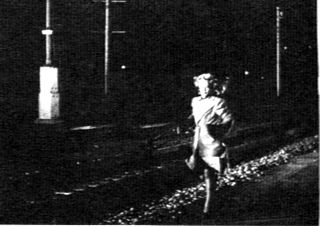 scholars have mined such treasures as the film pressbooks, especially with such fruitful results. So too, Biesen's arguments have been carefully thought through; for instance, I was pleased to see the connections between noir and the espionage genre made, similar genres whose relation is too often overlooked. The role of female executives in producing noir was surprising. The linkage between realism and noir was a brilliant insight, and a case convincingly made by the author, one which will profoundly change conceptions of the genre. The relevance of HUAC in ending noir was also enlightening. I was relieved to see, too, that the author knows to interpret documents, not simply taking them at face value. For instance, noting when filmmakers blithely disregarded censorship instructions will change conceptions of the role of censors. I strongly and without reservation recommend this book."—Brian Taves
scholars have mined such treasures as the film pressbooks, especially with such fruitful results. So too, Biesen's arguments have been carefully thought through; for instance, I was pleased to see the connections between noir and the espionage genre made, similar genres whose relation is too often overlooked. The role of female executives in producing noir was surprising. The linkage between realism and noir was a brilliant insight, and a case convincingly made by the author, one which will profoundly change conceptions of the genre. The relevance of HUAC in ending noir was also enlightening. I was relieved to see, too, that the author knows to interpret documents, not simply taking them at face value. For instance, noting when filmmakers blithely disregarded censorship instructions will change conceptions of the role of censors. I strongly and without reservation recommend this book."—Brian Taves
 "Readers will come away from Blackout with a fuller understanding of the industrial and historical contexts of wartime film noir.—Charles Maland, Cineaste
"Readers will come away from Blackout with a fuller understanding of the industrial and historical contexts of wartime film noir.—Charles Maland, Cineaste
"This text offers a compelling history of wartime Hollywood and a provocative challenge to current noir scholarship."—Southern California Quarterly
"An important contribution to the history of film noir."—Jan-Christopher Horak, Screening the Past
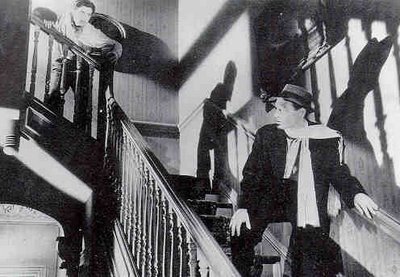
 Sheri Chinen Biesen, Ph.D. is a film historian and professor of radio, television, and film studies at Rowan University, and author of Blackout: World War II and the Origins of Film Noir and Music in the Shadows: Noir Musical Films at Johns Hopkins University Press. Educated
at the University of Southern California School of Cinema-Television
(B.A. 1987, M.A. 1995) and University of Texas at Austin (Ph.D. 1998),
Professor Biesen is the recipient of numerous research awards and
teaching honors and has taught cinema history at the University of Texas
at Austin, University of California, University of Southern California
School of Cinema-Television, and University of Leicester in England. She
has worked as a writer and script analyst for The American Film
Institute Alumni Writers Workshop and contributed to the BBC documentary The Rules of
Film Noir, Film Noir: The Directors, The Historical Journal of Film, Radio and Television,
Film Noir Reader 4, Film and History, Gangster Film Reader, Film Noir: The Encyclopedia,
Literature/Film Quarterly, Quarterly Review of Film and Video, The
Historian, Television and Television History, Popular Culture Review, Turner Classic Movies
Public Enemies in the Warner Bros. Gangster Collection, and edited The Velvet Light Trap. Blackout interview
Sheri Chinen Biesen, Ph.D. is a film historian and professor of radio, television, and film studies at Rowan University, and author of Blackout: World War II and the Origins of Film Noir and Music in the Shadows: Noir Musical Films at Johns Hopkins University Press. Educated
at the University of Southern California School of Cinema-Television
(B.A. 1987, M.A. 1995) and University of Texas at Austin (Ph.D. 1998),
Professor Biesen is the recipient of numerous research awards and
teaching honors and has taught cinema history at the University of Texas
at Austin, University of California, University of Southern California
School of Cinema-Television, and University of Leicester in England. She
has worked as a writer and script analyst for The American Film
Institute Alumni Writers Workshop and contributed to the BBC documentary The Rules of
Film Noir, Film Noir: The Directors, The Historical Journal of Film, Radio and Television,
Film Noir Reader 4, Film and History, Gangster Film Reader, Film Noir: The Encyclopedia,
Literature/Film Quarterly, Quarterly Review of Film and Video, The
Historian, Television and Television History, Popular Culture Review, Turner Classic Movies
Public Enemies in the Warner Bros. Gangster Collection, and edited The Velvet Light Trap. Blackout interview
Films and behind-the-scenes...
Blind Alley, Let Us Live, Rio, You Only Live Once
Stranger on the Third Floor, Brother Orchid
Blues in the Night, Face Behind the Mask, Out of the Fog
Suspicion, Citizen Kane, espionage, gothic thriller
Spellbound, Shadow of a Doubt
PreCode-era Maltese Falcon, and 1941 version
All Through the Night, Across the Pacific
This Gun for Hire, Casablanca
Moontide
Street of Chance
newsreels, propaganda films like Hangmen Also Die
war films like Sahara
Val Lewton psychological horror noir, B pictures
Ministry of Fear
Double Indemnity
Murder My Sweet
Postman Always Rings Twice
Phantom Lady
Mildred Pierce
Gilda, Lady from Shanghai
Laura, Detour
Woman in the Window
Scarlet Street
To Have and Have Not
The Big Sleep
The Blue Dahlia
The Stranger
Dead Reckoning, Out of the Past
legacy of wartime noir in postwar era
























